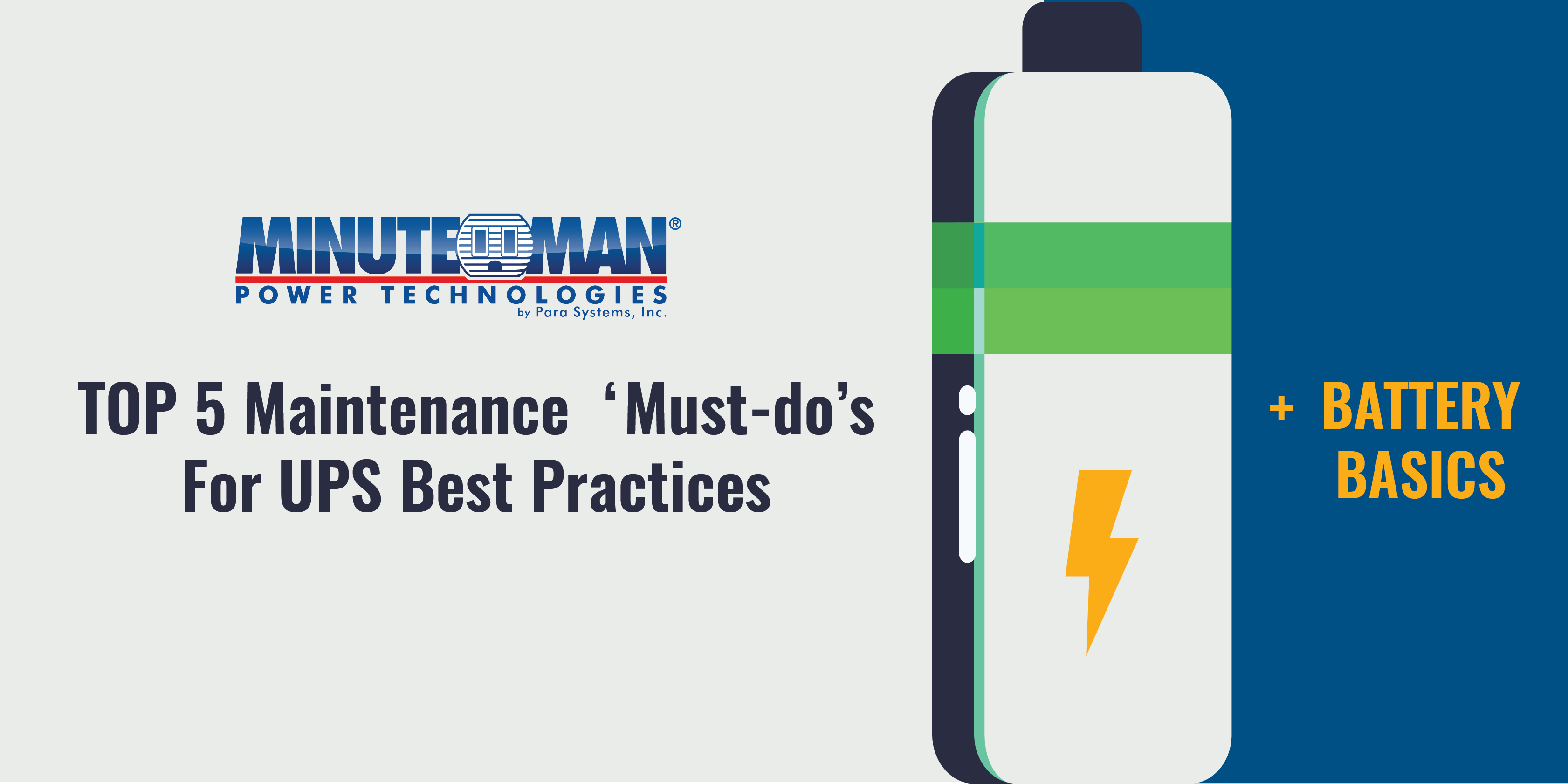UPS MAINTENANCE BEST PRACTICES:
CONTROL ENVIRONMENT
- Keep the UPS in an environmentally controlled, clean and well-ventilated area
- Prevent overheating and ensure optimally efficient operation of the UPS by removing any dust accumulation from the UPS on a regular basis, especially from fan openings
PERIODICALLY SELF-TEST
- Schedule periodic self-tests of the UPS, to include both electronics and a 10-second battery testing (check the user manual for available options specific to your unit)
MAINTAIN A CHARGE
- The UPS automatically charges internal batteries when connected to utility power, however, if in storage, the UPS batteries should be charged every 90 days for 8 hours minimum
DEEP-CYCLE ANNUALLY
- Schedule a deep-cycle battery test annually where they are depleted to low-battery cut-off, (LBCO). Ensure there are no critical applications running prior to testing to prevent data loss.
- Immediately order replacement batteries anytime a UPS self-test identifies weak or dead internal batteries.
KEEP CURRENT
- Visit the Minuteman Resource Library for any firmware or software updates:
- UPS firmware updates are listed under the UPS model
- SentryHD software and SNMP card firmware updates are listed under Network Accessories
BATTERY BASICS:
LIFE EXPECTANCY = 3-5 YEARS
Average VRLA (Valve-regulated, lead-acid) batteries will last 3-5 years
TEMPERATURE & HUMIDITY = 77°F
Optimal temperature for maximum life is 77°F (25°C), with an operating temperature range between 32°F – 104°F (0°C – 40°C). Operating outside this range will adversely affect the performance and longevity of the batteries.
USE & STORAGE = 8 HOURS EVERY 90 DAYS + DEEP-CYCLE
If stored, batteries should be charged 8 hours minimum every 90 days. Repeated, short-cycle use of VRLA batteries reduces overall performance. If operated in an environment experiencing recurring, short-term utility outages, run a deep-cycle battery test on an annual basis to help maintain maximum runtime performance.








